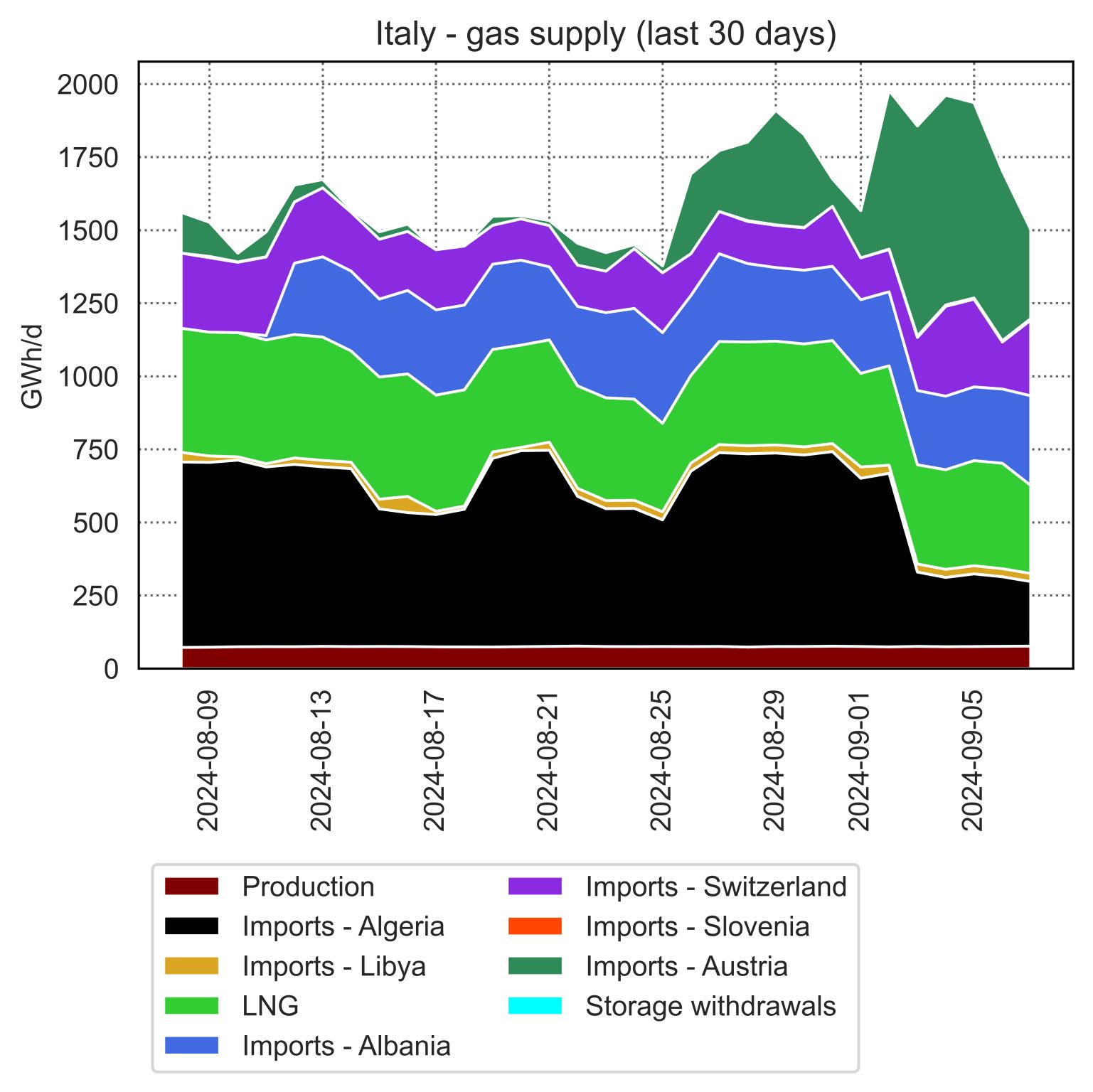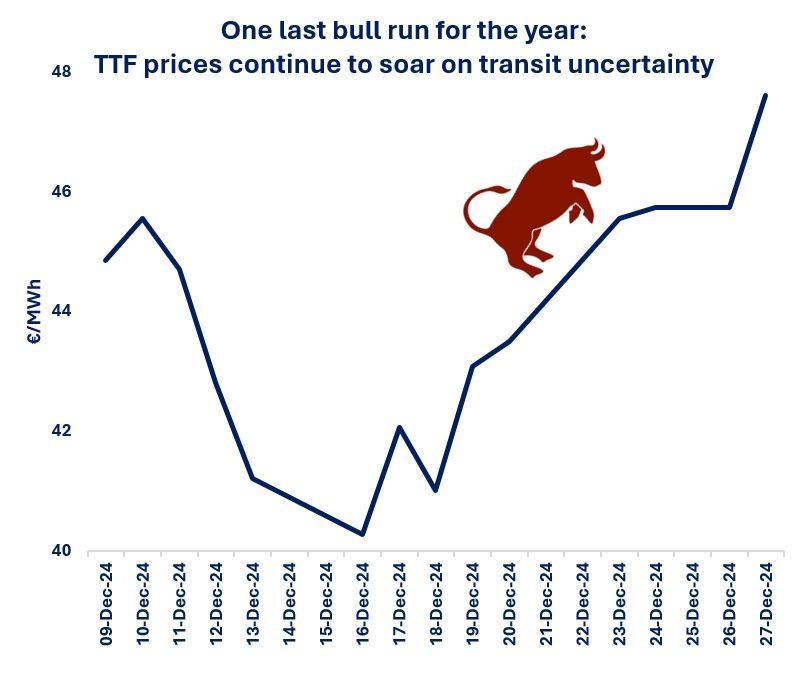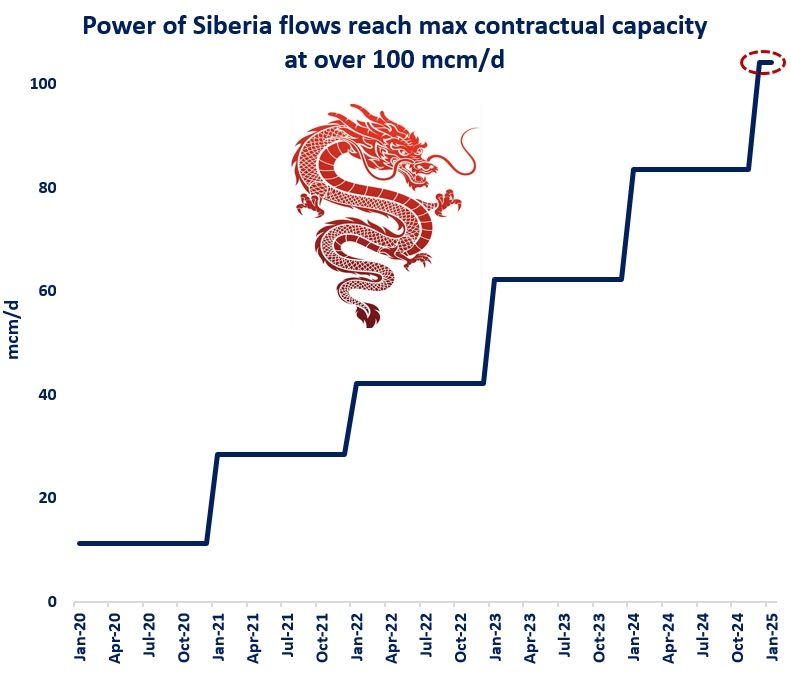

North West Europe’s gas storage picture has improved a bit since mid-December thanks to mild weather, but the situation remains fragile and stocks are likely to finish the winter at an historic low unless temperatures remain warmer-than-average for February-March.
To give some historical and meteorological context, this chart expresses the aggregate stock level in Germany, France, Belgium and the Netherlands in terms of the average temperature deviation that is needed to draw stocks down to 10% fullness by the end of March.
At this stage of the winter in previous years, the stock level has been high enough to withstand temperatures at least 15% colder – and typically a lot lower – than the long-term average. i.e. there was very little risk of stocks becoming critically low.
But this year, stocks are only sufficient to cover withdrawals and avoid <10% end-winter fullness if temperatures are 1-2% warmer than the norm. Luckily the outlook for the first half of February is currently quite mild…
Source: Jake HORSLEN, S&P Global Platts (LinkedIn)













